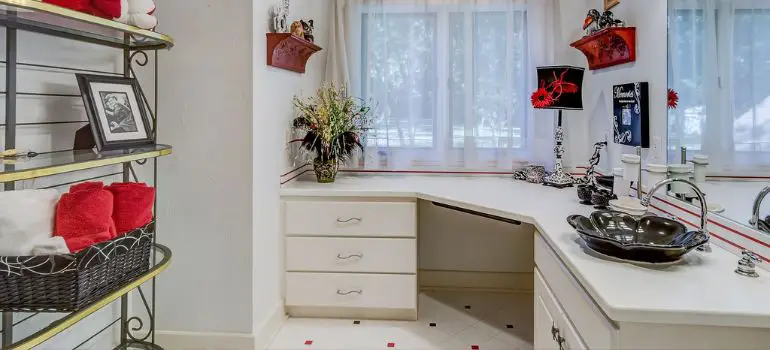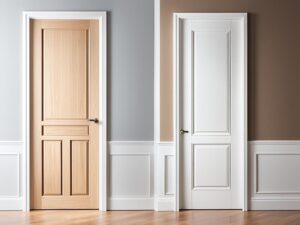In modern interior design, raising cabinets off the floor has become a popular trend. This technique not only enhances the aesthetic appeal of a space but also offers practical benefits. Whether you’re renovating your kitchen or upgrading your bathroom, elevating cabinets can elevate the entire room. Here’s everything you need to know about how to raise cabinets off the floor effectively.
Benefits of Raising Cabinets
Improved Aesthetics
Raising cabinets creates a sleek and contemporary look, adding an illusion of space by making the floor area appear larger. It also facilitates easier cleaning underneath the cabinets, eliminating hard-to-reach corners where dirt and grime accumulate.
Better Functionality
With cabinets lifted off the floor, accessing items stored beneath them becomes effortless. This configuration also prevents damage from water spills, reducing the risk of mold and mildew growth.
Enhanced Durability
By keeping cabinets away from direct contact with the floor, you mitigate the risk of water damage and potential wear and tear caused by frequent cleaning or sweeping.
Methods to Raise Cabinets
There are several methods to raise cabinets off the floor, each with its own advantages and considerations:
Using Furniture Legs
Attaching furniture legs to the base of cabinets is a straightforward approach. These legs come in various styles and heights, allowing you to customize the elevation according to your preferences.
Constructing a Platform Base
Building a platform base provides a stable foundation for the cabinets. This method is ideal for uneven floors, as it allows for adjustments to ensure a level installation.
Installing Adjustable Feet

Adjustable feet offer versatility, enabling you to fine-tune the height of the cabinets as needed. This option is particularly useful for kitchens or bathrooms with sloping floors.
Choosing the Right Materials
When raising cabinets off the floor, it’s essential to select suitable materials that align with your specific requirements:
Considerations for Different Flooring Types
Different flooring materials may necessitate different installation methods. For instance, hardwood floors may require protective measures to prevent scratches, while tile floors may require additional support to distribute weight evenly.
Factors Affecting Cabinet Weight
Consider the weight of the cabinets and their contents when selecting materials for elevation. Ensure that the chosen method can support the load without compromising stability.
Step-by-Step Guide
Preparation
- Measure the height required for raising the cabinets.
- Gather the necessary tools and materials.
- Clear the area around the cabinets for easy access.
Installation Process
- Position the cabinets in the desired location.
- Attach the chosen method of elevation securely to the base of the cabinets.
- Check for levelness and adjust as needed.
- Secure the cabinets to the wall for added stability.
Safety Precautions
- Wear appropriate protective gear, such as gloves and safety glasses.
- Use caution when working with power tools or heavy equipment.
- Ensure proper ventilation in enclosed spaces.
Maintenance Tips
To ensure the longevity of raised cabinets, follow these maintenance guidelines:
Regular Cleaning
- Routinely clean both the cabinets and the space underneath to prevent dust buildup.
- Use mild cleaning agents and avoid abrasive materials that could scratch the surfaces.
Inspection for Stability
- Periodically check the stability of the cabinets and their supports.
- Tighten any loose fasteners or components to maintain structural integrity.
Cost Considerations
While raising cabinets off the floor may require an initial investment, the long-term benefits often outweigh the costs:
Budget-Friendly Options
- Explore affordable materials and DIY installation methods to minimize expenses.
- Consider the potential savings in maintenance and repair costs over time.
Long-Term Investment Benefits
- Raising cabinets can increase the value of your property, making it more appealing to potential buyers.
- Improved functionality and durability translate to reduced expenses for future renovations or replacements.
DIY vs. Professional Installation
Deciding whether to tackle cabinet raising as a DIY project or hire a professional depends on various factors:
Pros and Cons of Each Approach
- DIY projects offer cost savings and a sense of accomplishment but require time and effort.
- Professional installation ensures expertise and guarantees quality results but may involve higher upfront costs.
Common Mistakes to Avoid
When raising cabinets off the floor, avoid these common pitfalls to ensure a successful outcome:
Underestimating Weight Distribution
Failure to distribute weight evenly can lead to instability or structural damage over time. Be mindful of the load-bearing capacity of your chosen elevation method.
Ignoring Structural Integrity
Ensure that the cabinets and their supports are securely fastened to prevent accidents or damage. Use appropriate hardware and reinforcement as needed.
Case Studies
Real-life examples illustrate the effectiveness of raising cabinets off the floor:
- In a kitchen renovation project, raising cabinets created additional storage space and improved accessibility for the homeowners.
- A bathroom remodel incorporated raised cabinets to accommodate plumbing fixtures while maintaining a clean and modern aesthetic.
Environmental Impact
Consider the environmental implications of your cabinet-raising project:
- Choose sustainable materials and practices to minimize waste and reduce your carbon footprint.
- Explore eco-friendly alternatives for cabinet construction and installation.
Future Trends
As technology and design trends evolve, so do innovations in cabinet raising:
- Advancements in materials and manufacturing techniques offer greater flexibility and customization options.
- Integration of smart technology allows for enhanced functionality and connectivity in cabinet systems.
Conclusion
Raising cabinets off the floor is a simple yet effective way to enhance the appearance and functionality of any space. By choosing the right materials and installation methods, you can enjoy the benefits of elevated cabinets for years to come.
FAQs
The height of raised cabinets can vary depending on personal preference and practical considerations. However, a common recommendation is to elevate them by at least 4 to 6 inches to facilitate cleaning and airflow.
Most types of cabinets can be raised using appropriate methods and materials. However, it’s essential to consider factors such as weight distribution and structural integrity when planning the elevation.
Raised cabinets can enhance the overall appeal and functionality of a space, potentially increasing its resale value. However, the impact may vary depending on market trends and buyer preferences.
Legal requirements for cabinet raising may vary depending on local building codes and regulations. It’s advisable to consult with a qualified contractor or building inspector to ensure compliance with applicable laws.
Retrofitting existing cabinets to be raised is possible with the right tools and techniques. However, it may require additional modifications or reinforcement to ensure stability and structural integrity.



